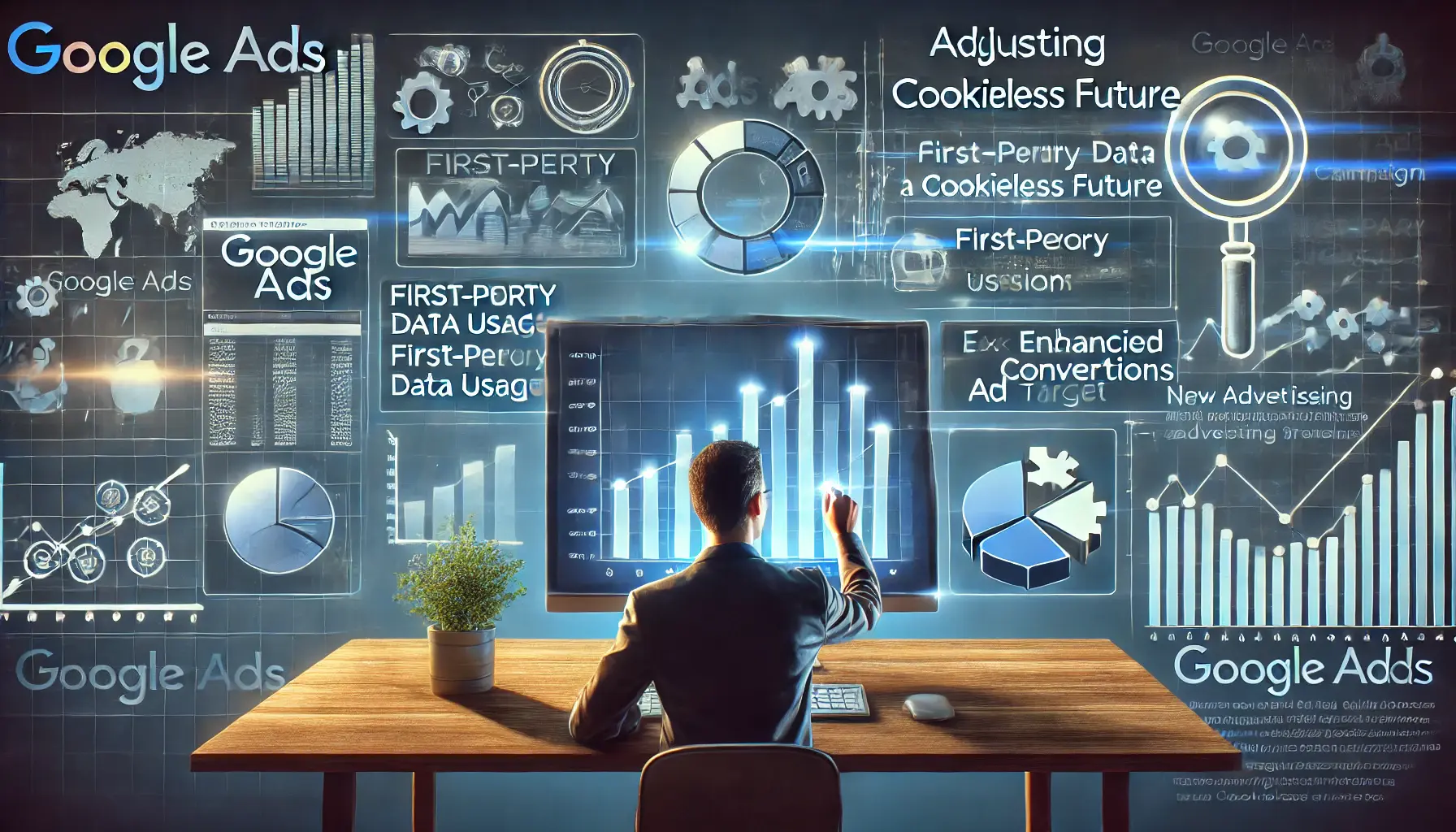The fast-paced world of digital marketing faces an impending deprecation of third-party cookiesCookies placed by a website other than the one a user is visiting, used for tracking across multiple sites., sending shockwaves across the advertising industry.
For a long period of time, these small but powerful tools have formed the backbone of personalized advertising, allowing businesses to track user behavior, deliver appropriate ads, and optimize their marketing strategies.
However, with growing concerns over privacy and tightening regulatory changes, the era of third-party cookies is coming to an end.
Understanding this transition isn’t just a need; it’s a necessary step for marketers to stay ahead in this changed landscape.
As a digital marketer, you might already be wondering: What exactly are third-party cookies, and why is their deprecation such a big deal?
More importantly, how can you adapt to this new world without hurting your campaigns?
This article dives into great detail about third-party cookies, their function in advertising, and the best strategies to navigate their deprecation.
Let’s begin by exploring the foundational concept of third-party cookies and their significance in advertising.
- Understanding Third-Party Cookies and Their Role in Advertising
- Impact of Third-Party Cookie Deprecation on Digital Advertising
- Considering Alternatives to Third-Party Cookies
- Adjusting Your Google Ads Campaigns for a Cookieless Future
- Preparing for the Deprecation of Third-Party Cookies
- Embracing the Future of Digital Advertising Without Third-Party Cookies
- Frequently Asked Questions About Third-Party Cookie Deprecation
Understanding Third-Party Cookies and Their Role in Advertising
To fully grasp the implications of third-party cookie deprecation, it’s crucial to first understand what these cookies are and why they play such a vital role in digital advertising.
At their core, third-party cookies are small pieces of data stored on a user’s browser by websites other than the one they are visiting.
These cookies allow advertisers to track users across multiple websites, gaining insights into their behavior, preferences, and interests.

Visual representation of how third-party cookies connect and track data across devices.
Definition and Function of Third-Party Cookies
Third-party cookies are essentially tracking mechanisms.
Unlike first-party cookiesCookies set by the website the user is currently visiting, primarily used for enhancing user experience., which create an enhanced experience for users through the website they interact with, third-party cookies originate from sources other than the host domain.
Their primary purpose is to capture data for cross-site tracking, targeted advertising, and analytics.
This ability to follow users across the web has made them invaluable for marketers seeking to understand audience behavior and deliver relevant ads.
- Tracking User Behavior: Third-party cookies monitor activities such as page visits, clicks, and time spent on various websites.
- Enhancing Ad Targeting: The data collected enables advertisers to create highly targeted campaigns based on user interests.
- Optimizing Marketing Strategies: Insights from cookies help businesses refine their approaches for better ROI.

Visualizing the role of personalization and precision in digital advertising.
Importance in Ad Targeting and Personalization
The power of third-party cookies lies in their ability to provide a comprehensive view of user activity across the internet.
This information forms the basis for personalized advertising, enabling marketers to deliver content that resonates with individual preferences.
For example, if you frequently search for running shoes, you’re likely to encounter ads tailored to your interests, thanks to third-party cookies.
- Improved User Experience: Personalized ads make online experiences more relevant and engaging for users.
- Higher Conversion Rates: Targeted campaigns often result in better click-through and conversion rates.
- Efficient Budget Allocation: Advertisers can focus resources on audiences most likely to convert.

Illustration of privacy challenges leading to the deprecation of third-party cookies.
Privacy Concerns Leading to Deprecation
Despite their benefits, third-party cookies have faced increasing scrutiny over privacy concerns.
Many users feel uncomfortable with the extent of tracking and data collection involved.
In response, regulatory bodies and technology companies have pushed for stricter privacy standards.
This shift has led major browsers, such as Google Chrome, to phase out support for third-party cookies, signaling a significant change in the advertising ecosystem.
In this context, it’s essential for advertisers to understand both the advantages and limitations of third-party cookies as they prepare for a cookieless future.
The next section will explore the impact of this deprecation on digital advertising and how it’s reshaping the industry.
Third-party cookies play a crucial role in ad targeting by tracking user behavior across multiple websites. They allow for precise personalization and campaign optimization, but their deprecation demands new strategies for effective advertising.

Representation of the disruptions caused by third-party cookie deprecation in digital advertising.
Impact of Third-Party Cookie Deprecation on Digital Advertising
The digital advertising landscape is undergoing a significant transformation with the deprecation of third-party cookies.
This shift presents both challenges and opportunities for advertisers.
Understanding these changes is crucial for adapting strategies and maintaining campaign effectiveness.

Illustration of the challenges marketers face in adapting to a cookieless digital advertising landscape.
Challenges for Advertisers and Marketers
The removal of third-party cookies disrupts traditional methods of tracking user behavior across websites.
This change poses several challenges:
- Reduced Targeting Precision: Advertisers may find it more difficult to deliver personalized ads without access to cross-site tracking data.
- Measurement Difficulties: Assessing campaign performance becomes more complex without third-party data, potentially leading to less effective optimization.
- Increased Reliance on First-Party Data: Marketers must now focus on collecting and utilizing their own data, which requires new tools and strategies.

Visual representation of the impact of third-party cookie deprecation on ad targeting and measurement.
Effects on Ad Targeting and Measurement
The deprecation of third-party cookies impacts several pillars of digital advertising, including:
- Audience Segmentation: Difficulty in building detailed audience profiles impinges on the ability to target specific user groups.
- Attribution Models: With the accuracy of tracking across multiple touchpoints impaired, evaluating the effectiveness of marketing efforts becomes challenging.
- Retargeting Campaigns: Without third-party tracking capabilities, re-engaging users who previously interacted with a brand becomes significantly harder.

Illustration of the shift in user privacy and data collection practices.
Impact on User Privacy and Data Collection
While the retirement of third-party cookies enhances user privacy, it also necessitates a paradigm shift in data collection practices:
- Increased Transparency: Marketers must be more transparent about data collection methods to build trust with end-users.
- Explicit User Consent: Gaining explicit user consent for data collection is essential to comply with stricter privacy laws.
- Adoption of Privacy-Centric Technologies: Embracing new technologies that prioritize user privacy is crucial for future advertising efforts.
As the industry adapts to these changes, exploring alternatives to third-party cookies is essential for continued success in digital advertising.
The next section will delve into viable strategies and technologies that can help navigate this new landscape.
The deprecation of third-party cookies disrupts traditional methods of user tracking and ad targeting, leading to challenges in precision, measurement, and reliance on first-party data. Marketers need to adapt quickly to stay competitive.

Exploring innovative alternatives to third-party cookies in advertising.
Considering Alternatives to Third-Party Cookies
With the shift in the digital advertising landscape away from third-party cookies, exploring alternative strategies that maintain effective ad targeting and measurement while respecting user privacy is important.
The following are some viable alternatives:

Illustrating the process of first-party data collection in digital marketing.
First-Party Data Collection Strategies
Leveraging data directly collected from your audience can improve personalization and engagement.
Consider the following:
- Surveys and Feedback Forms: Understand user preferences and behaviors by directly asking your audience.
- Email Subscriptions: Allow users to subscribe to newsletters as a channel for personalized content delivery.
- Website Analytics: Study user trends on the website to deliver targeted advertising.

Illustration of contextual advertising techniques matching ads to relevant content.
Contextual Advertising Techniques
Contextual advertising offers better relevance to ad serving without accessing personal data.
Strategies include:
- Content Analysis: Match advertisements to the themes and topics of the webpage to align with user interests.
- Keyword Targeting: Display targeted advertisements based on specific keywords within the content.
- Sentiment Analysis: Analyze the sentiment of content to ensure ads align with positive user experiences.

Visual representation of emerging privacy-preserving technologies in advertising, focusing on the Privacy Sandbox.
Emerging Technologies: Privacy Sandbox and Beyond
Innovations are being developed to balance effective advertising with user privacy.
Notable technologies include:
- Google’s Privacy Sandbox: A set of APIs designed to enable targeted advertising without third-party cookies, focusing on cohort-based targeting and on-device data processing.
- Unified ID 2.0: An open-source framework that uses encrypted email addresses to create a standardized identifier, enhancing privacy and control for users.
- Device Fingerprinting: Techniques that identify devices based on their unique characteristics, though these raise significant privacy concerns and are subject to regulatory scrutiny.
Adapting to a cookieless future requires embracing these alternatives to maintain effective digital advertising strategies.
The next section will discuss how to adjust your Google Ads campaigns in light of these changes.
- Leverage first-party data through surveys, feedback, and analytics.
- Adopt contextual advertising to align ads with content themes.
- Explore emerging technologies like Google’s Privacy Sandbox for privacy-preserving ad targeting.

Illustrating the adjustment of Google Ads campaigns for a cookieless future, focusing on first-party data and privacy-compliant strategies.
Adjusting Your Google Ads Campaigns for a Cookieless Future
As the digital advertising landscape evolves with the deprecation of third-party cookies, it’s essential to adapt your Google Ads campaigns to maintain effectiveness and comply with new privacy standards.
Here are key strategies to consider:

Illustrating the process of implementing enhanced conversions with secure customer data and privacy-compliant tracking.
Implementing Enhanced Conversions
Enhanced Conversions allow more precise conversion tracking with first-party data.
By securely collecting and hashing sensitive customer information, such as email addresses, you can attribute conversions back to your campaigns even without third-party cookies.
- Accurate Measurement: Enhanced Conversions provide higher accuracy in measuring campaign performance, enabling informed optimization decisions.
- Privacy Compliance: This method respects user privacy by hashing customer data before sending it to Google.

Illustrating the use of Google’s Privacy Sandbox for privacy-centric digital advertising.
Utilizing Google’s Privacy Sandbox
Google’s Privacy SandboxGoogle's initiative to develop web standards that improve user privacy while enabling targeted advertising. is an initiative designed to develop new web technologies that protect user privacy while supporting digital advertising.
Familiarizing yourself with these tools can help you adapt to a cookieless environment.
- Topics API: Enables interest-based advertising by grouping users into topics based on their browsing behavior, without revealing individual identities.
- FLEDGE: Supports remarketing and custom audience use cases without relying on third-party cookies.

Illustrating the process of leveraging first-party data for personalized digital marketing.
Leveraging First-Party Data
Building and utilizing your own data is crucial in a cookieless world.
Strategies include:
- Customer Match: Upload your customer data to Google Ads to create personalized campaigns targeting existing customers.
- Website and App Analytics: Analyze user behavior on your platforms to inform ad targeting and content creation.

Illustrating how contextual targeting matches ads with content based on its theme and context.
Exploring Contextual Targeting
Contextual targeting involves placing ads on websites or pages that are relevant to your product or service, based on the content of the page rather than user behavior.
- Relevance: Aligning your ads with related content can increase engagement and conversion rates.
- Compliance: This method does not rely on personal data, ensuring adherence to privacy regulations.
By employing these strategies, you can successfully adapt your Google Ads campaigns for a world devoid of third-party cookies.
The key to continued success in this changing environment will be constant testing and staying up to date with new technologies.
- Implement enhanced conversions for precise tracking using first-party data.
- Utilize Google’s Privacy Sandbox tools like Topics API and FLEDGE for compliant targeting.
- Embrace contextual targeting for relevance without infringing privacy.

Illustrating the preparation for the deprecation of third-party cookies and adjusting digital advertising strategies.
Preparing for the Deprecation of Third-Party Cookies
With the ever-evolving digital advertising landscape, the deprecation of third-party cookies requires strategic adjustments to maintain effective marketing campaigns.
Here are key steps to prepare for this transition:

Illustrating the process of auditing data collection practices in a professional digital marketing environment.
1. Audit Your Current Data Collection Practices
Begin by assessing how your organization currently collects and utilizes data for the following purposes:
- Identify Dependencies: Determine which marketing activities depend on third-party cookies.
- Evaluate Data Sources: Assess the quality and reliability of your existing first-party data.
- Compliance Check: Ensure all data collection methods adhere to current privacy regulations.

Illustrating the process of investing in first-party data strategies for personalized advertising.
2. Invest in First-Party Data Strategies
Enhancing your first-party data collection is crucial:
- Enhance User Engagement: Encourage users to share information through value-driven interactions.
- Implement Robust CRM Systems: Utilize Customer Relationship Management tools to manage and analyze customer data effectively.
- Leverage Customer Feedback: Use surveys and feedback forms to understand customer preferences and behaviors.

Illustrating the exploration of alternative targeting methods in digital advertising.
3. Explore Alternative Targeting Methods
Adapt targeting methods to align with privacy-centered approaches, such as:
- Contextual Advertising: Advertise based on what users are viewing, rather than their browsing history.
- Cohort-Based Targeting: Group users with similar interests for ad targeting; tools like Google’s Privacy Sandbox can assist in this process.

Illustrating the process of updating measurement and attribution models for a privacy-compliant digital marketing environment.
4. Update Measurement and Attribution Models
Rethink how you measure the success of your campaigns:
- Enhanced Conversions: Use first-party data to improve the accuracy of your conversion tracking.
- Privacy-Preserving Measurement Tools: Experiment with solutions that provide insights while protecting user privacy.

Illustrating the process of educating and training a team to adapt to a cookieless future in digital marketing.
5. Educate and Train Your Team
Prepare your marketing team for the shift:
- Training: Train team members on new tools and strategies for a cookieless future.
- Stay Informed: Keep up-to-date with industry developments and emerging technologies.
By proactively implementing these steps, your organization can navigate the deprecation of third-party cookies and continue to execute effective, privacy-compliant digital marketing campaigns.
- Audit current data practices and ensure regulatory compliance.
- Invest in first-party data collection and CRM systems.
- Update measurement models and educate your team on cookieless strategies.

Symbolizing the future of digital advertising without third-party cookies, focusing on privacy and new strategies.
Embracing the Future of Digital Advertising Without Third-Party Cookies
The deprecation of third-party cookies is a monumental shift in the digital advertising landscape.
Marketers and advertisers must be prepared to adapt, innovate, and embrace new strategies to thrive in this evolving environment.
This change is not only a challenge but also an opportunity to create more transparent, privacy-focused campaigns that resonate with users.

Illustrating the key takeaways for navigating a cookieless future in digital advertising.
Key Takeaways for Navigating a Cookieless Future
In this article, we have discussed several important strategies and technologies that can help digital advertisers maintain effectiveness while aligning with privacy regulations.
Here are the key takeaways:
- Understanding the Role of Third-Party Cookies: Recognize their importance in ad targeting and why their deprecation necessitates change.
- Exploring Alternatives: Leverage first-party data, contextual advertising, and emerging technologies like Google’s Privacy Sandbox to adapt your campaigns.
- Adjusting Your Google Ads Campaigns: Implement enhanced conversions, explore privacy-preserving tools, and utilize first-party data to maintain campaign effectiveness.
- Preparing for the Transition: Audit your current practices, update measurement models, and educate your team to ensure a smooth shift to a cookieless environment.

Symbolizing the journey towards a cookieless and privacy-compliant future in digital advertising.
The Path Forward
Moving into a future without third-party cookies, the emphasis on user privacy and data transparency will only grow.
By proactively adopting privacy-centric practices and exploring new and emerging technologies, advertisers can foster trust among their audiences while continuing to achieve their marketing goals.
This transformation also provides an opportunity to reinvent digital advertising, enabling stronger connections between brands and users.
Adaptation is essential, and those who embrace change early will gain a competitive edge.
The strategies and insights shared here offer a roadmap for making this transition smoothly and confidently.
With the right approach, the deprecation of third-party cookies can usher in a new era of responsible and effective digital advertising.
The deprecation of third-party cookies is an opportunity to build more transparent, privacy-focused campaigns. Early adoption of new technologies and strategies will provide a competitive edge in the evolving digital landscape.

Illustrating the frequently asked questions about third-party cookie deprecation in digital advertising.
Your campaigns can be managed by an agency specialized in Google Ads, check out our service page.
Frequently Asked Questions About Third-Party Cookie Deprecation
With changes coming to the digital advertising landscape, many have questions regarding the deprecation of third-party cookies.
Below are some common questions and quick answers to help you through this transition.
Third-party cookies are tracking tools set by domains other than the one you’re visiting, used mainly for cross-site tracking and targeted advertising.
They’re being phased out due to privacy concerns, as they track users across sites without explicit consent, leading to data protection issues.
Major browsers like Chrome plan to phase out third-party cookies by early 2025, aligning with increasing privacy regulations.
Advertisers will face challenges in tracking user behavior and delivering personalized ads, necessitating new strategies and technologies.
Alternatives involve first-party data gathering, contextual advertising, and recent technologies such as Google’s Privacy Sandbox.
Businesses must audit current data practices, invest in first-party data strategies, and adopt new methods for targeting to adjust accordingly.
Yes, first-party cookies set by the website being visited will still be allowed and are vital for personalized user experiences.
It’s an initiative by Google to develop web technologies that protect user privacy while enabling targeted advertising without third-party cookies.
The deprecation of third-party cookies aims to improve user privacy by reducing unauthorized tracking and giving users more control over their data.









